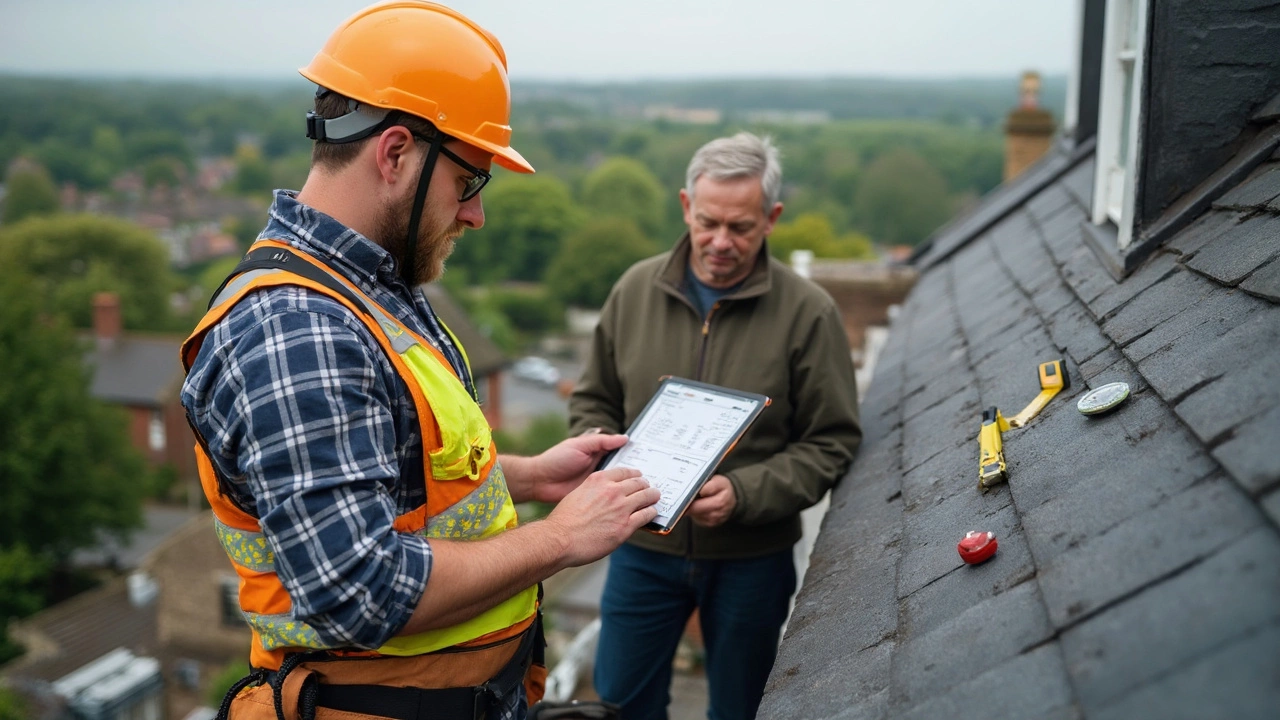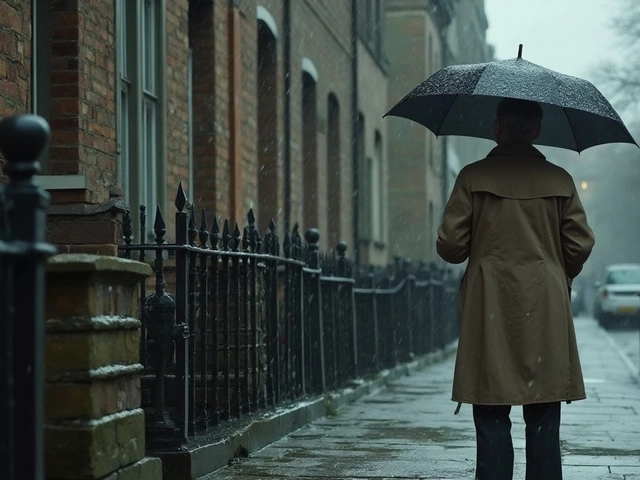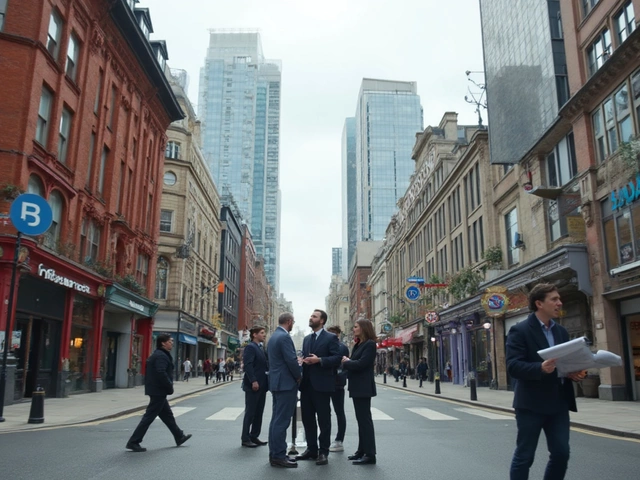
Sticker shock is real when you start getting quotes for a new roof. One minute you’re looking at weathered shingles, and the next you’re trying to wrap your head around a price tag that could buy a used car—or two. Still, ignoring the warning signs and waiting until things leak just leads to more expensive problems down the road.
So, where do you even start with a roofing budget? The key: break down the costs, figure out what you actually need, and get real about the numbers upfront. Most people underestimate the range; a basic asphalt roof is one thing, but if you need special materials or have a tricky roof design, prices jump fast. And that’s before you get into hidden problems like rot or bad flashing.
Being prepared is half the battle. Start by measuring your roof or digging out the blueprints so you’re not flying blind. Then, grab a few estimates from licensed pros. Watch out—some lowball bids leave out essentials that you’ll pay for later. We'll dig into what makes up those big numbers, where some homeowners get blindsided, and how you can dodge money pits with a little planning.
- Why Roof Costs Can Vary So Much
- Breaking Down the Typical Roofing Estimate
- Spotting Hidden & Unexpected Expenses
- Financing and Money-Saving Hacks
- Getting Bids and Comparing Contractors
- Plan for Maintenance (and the Next Roof)
Why Roof Costs Can Vary So Much
The price tag for a new roof can jump all over the place. If you ask five roofers for a quote, you might get five wildly different numbers. It’s not just about the materials—labor, your roof’s shape, and even your ZIP code play a big part. That’s why nailing down your roof budget isn’t as simple as Googling "average roofing costs" and calling it a day.
First up, your roof's size and style matter a ton. Bigger roof equals more materials, more labor, and more money. But complexity is just as important. Steep roofs, lots of hips and valleys, or stuff like skylights all make jobs more complicated. A plain, low-pitch ranch home needs less time and skill than a roof with lots of peaks and dormers.
- Roof budget is most affected by the material you pick—standard asphalt shingles, metal panels, clay tiles, or high-end slate. Asphalt is usually the cheapest. Metal and clay cost a lot more, both for parts and skilled installers.
- Your location matters. Labor is expensive in big cities, especially on the coasts. In Midwest towns, rates are usually lower. Local regulations can also force extra costs—some places make you rip off all old materials, others let you layer new shingles right on top.
- Old roofs often hide rotten decking or water-damaged wood. That bumps up your total, sometimes a lot.
- Disposal and cleanup can sneak onto the bill, too. Getting rid of your old roof costs money—dump fees and labor add up fast.
Here’s a quick look at what drives costs in different roofing projects:
| Roofing Factor | Budget Impact |
|---|---|
| Material (per sq. ft.) | $2-$5 (asphalt), $5-$14 (metal), $10-$30 (tile/slate) |
| Labor (per sq. ft.) | $2-$7 (varies by region/complexity) |
| Old Roof Removal | $1,000-$1,500 for average homes |
| Repairs (Decking/Flashing) | $500-$3,000 if damaged areas found |
| Disposal Fees | $50-$150 per ton |
So, when you start budgeting, think about your roof’s size, style, what it’s made of, and the shape it’s in now. Hidden stuff under the shingles can blow up your plans, so always pad your estimate by another 10% or so. That way you’re prepared for surprises instead of scrambling to find more cash at the last minute.
Breaking Down the Typical Roofing Estimate
Ever stare at a roof quote and wonder, “Where’s my money actually going?” Roofing estimates come with a bunch of line items, but it’s not all smoke and mirrors. Let’s break it down so you know exactly what you’re paying for—and what’s worth questioning.
Most roofers price by the “square,” which means a 10-foot by 10-foot chunk—so 100 square feet. The national average cost for a basic asphalt shingle roof hovers around $4 to $7 per square foot, but if you want metal or tile, those numbers can double (or even triple).
| Material Type | Average Cost per Square (100 sq ft) |
|---|---|
| Asphalt Shingles | $400 - $700 |
| Metal Roofing | $900 - $1,500 |
| Tile Roofing | $1,200 - $2,500 |
A standard roofing estimate usually breaks into these parts:
- Roof budget (Total Cost): The total project price. But don’t stop at the big number—check what’s inside.
- Labor: This is often half the cost. Skilled roofers don’t come cheap, and for good reason. Roofs are serious work (and not exactly a DIY weekend job).
- Materials: Not just shingles, but also underlayment, nails, flashing, vents, and maybe even new decking if there’s damage underneath.
- Tear-Off and Disposal: Old shingles and junk need to go somewhere, and dumpsters aren’t free. Ask if cleanup is included—some contractors toss that in as a separate charge.
- Permits and Inspections: Most cities and towns want their cut. If your roofer isn’t handling this, double-check so you’re not stuck on install day.
Here’s a common snag—sometimes “minor repairs” get flagged mid-project. Replacing a few sheaths of wood or fixing bad flashing can add a few hundred bucks. Don’t be shy about asking if the estimate includes small repairs, or if there’s an hourly labor rate tacked on for surprises.
Want a pro tip? Ask your roofer for a detailed breakdown, not just a grand total. The legit ones include itemized estimates, and if someone’s vague or dodgy, that’s a red flag. Specifics now mean no headaches later if you have to argue over extras.
Spotting Hidden & Unexpected Expenses
This is where a lot of folks get thrown for a loop. You think you’re just paying for shingles and labor, but stuff hiding under the surface often jacks up your bill. Most roofing contractors will warn you that what they see from the ground isn’t the whole story—the real surprises show up once those old shingles come off.
Common gotchas? Rotten decking, water damage, or even missing proper ventilation. Roofers sometimes find old layers of roofing that aren’t up to code. And if your home has skylights or chimneys, there’s a good chance you’ll need new flashing or repairs around those areas. Check out this quick breakdown of extra costs you might face:
| Expense Type | Potential Added Cost (USD) | How Often It Pops Up |
|---|---|---|
| Rotten Decking Replacement | $1.50–$3.00 per sq. ft. | About 15–25% of projects |
| Upgrading Underlayment | $0.50–$1.00 per sq. ft. | More common in older homes |
| Flashing Repair/Replacement | $200–$500 per feature | Very common around chimneys/vents |
| Ventilation Fixes | $300–$900 total | Needed in homes with poor airflow |
Here’s the thing: These extra costs can easily stack up to a few thousand bucks if you aren't ready for them. That’s why lots of experts recommend padding your roof budget by at least 10–20%. As Joel, a roofing inspector with 20+ years in the business, puts it:
“Most of the cost overruns I see aren’t about sneaky upsells—it’s genuine damage hidden under the shingles. Always plan for a little extra so you’re not caught off guard.”
If you get an estimate that sounds too good to be true, ask the contractor what’s included—and what’s not. Get it in writing. If they won’t do that, move on. Some contractors offer to do a ‘pre-tear-off’ inspection by removing a small section first, so you both know what you’re dealing with. It can cost a couple hundred bucks, but it’s way cheaper than getting blindsided mid-job.

Financing and Money-Saving Hacks
Most people don’t have a stash of cash ready for a roof, so choosing the best way to pay for it matters. Not every option fits every budget, though. First, check if your roof damage is covered by homeowners insurance—especially if the problem came from a specific event like a storm. If so, file a claim before you agree to anything. Insurance might not cover wear and tear, but it’s worth double-checking.
Next up, there are lots of ways to spread out that big bill. Many roofing contractors partner with lenders or have their own financing offers. These can range from zero-interest deals for six to 18 months (if you pay on time) to affordable monthly payment plans.
- HELOC (Home Equity Line of Credit): You use your home’s equity as a low-interest credit option, but don’t risk your house with missed payments.
- Credit cards: Handy for small repairs, but regular interest rates are super high—often over 20% APR—so not the best for major replacements.
- Personal loan: Fast approval, predictable fixed payments, but often higher rates than home equity loans.
- Government-backed loans: Programs like FHA Title I let you borrow up to $25,000 unsecured for home improvements.
Want to trim costs without cutting corners? Here’s where smart planning pays off:
- Schedule your install for the off-season (late fall or early winter). Contractors need the work then, so you can negotiate for discounts—sometimes 10% off or more.
- Shop around. Get at least three quotes. The lowest isn’t always best, but big price gaps are a red flag—ask why.
- Ask your roofer about shingle upgrades—sometimes a small upcharge on materials now means a longer warranty and fewer headaches later.
- Look for manufacturer and utility rebates. Some brands and energy programs offer cash back on cool roofs or specific materials.
| Financing Option | Typical Rate (2025) | Best For |
|---|---|---|
| HELOC | 7-9% APR | Big projects, good credit |
| Credit Card | 20-24% APR | Small repairs, promo offers |
| Personal Loan | 9-15% APR | No home equity, quick cash |
| FHA Title I Loan | 6.99-10.5% APR | No equity, credit challenges |
Don’t forget to ask about payment schedules—some pros want half down, some only after the job is done. As Ryan Montgomery from the National Roofing Contractors Association says,
“Getting detailed quotes and understanding your financing up front can mean the difference between a smooth experience and a budgeting nightmare.”
The real trick? Don’t just chase a deal—balance short-term savings with long-term value. Sometimes spending a little more upfront gets you a roof that outlasts the rest, saving you piles of money later. Focus on the actual roof budget number, but keep one eye on the years ahead too.
Getting Bids and Comparing Contractors
If you want a roof job that actually holds up, you can’t just go with the first quote you get. Quality, price, warranty—all that stuff matters, and no two contractors bid exactly the same. So, what’s the smart move? Always collect at least three written bids. This gives you a real sense of the going rate in your area, and it protects you from surprise markups or cheap materials. Don’t assume the cheapest bid is a bargain either—a suspiciously low price usually cuts corners or hides fees.
When checking out contractors, you want to ask some pointed questions right from the start. Are they licensed and insured? How long have they been in business? Got local references? Any recent jobs you can drive by to see their work? Good roofers have nothing to hide. And always make sure everything’s in writing—not just the final bill, but materials, the exact scope of work, timelines, and cleanup plans.
- Ask if old roofing will be removed or just covered. Covering old shingles is a shortcut you probably don’t want.
- Double-check manufacturer certifications—Certainteed, GAF, and Owens Corning all have programs for roofers. Certified pros can sometimes offer boosted warranties.
- Compare warranty terms. A solid warranty covers labor and both the materials and installation. Many reputable companies offer 10-to-25-year workmanship warranties today if they’re confident in their crew.
- See if the bid includes permits, debris removal, and extra costs for rotten decking. If not, you may get nickeled and dimed later.
Want a look at how bids often stack up? Check out this quick comparison of three real-world roofing quotes for a 2,000-square-foot asphalt shingle roof in the U.S.:
| Company | Total Bid | Materials Used | Workmanship Warranty | Notes |
|---|---|---|---|---|
| RoofRight Pros | $10,200 | GAF Timberline HDZ shingles | 20 years | Includes full tear-off, disposal, and permit fees |
| Budget Build Roofing | $8,400 | Basic asphalt shingles (no brand) | 5 years | No tear-off, just adding new layer; permits not included |
| Skyline Roofing Co. | $11,000 | Owens Corning TruDefinition shingles | 25 years | Certified installers, upgraded underlayment, free ridge vent |
Notice how the extras, material quality, and warranty make a difference. The roof budget you plan should always account for more than just the ticket price—look at the full package. When in doubt, ask to see proof of insurance and bonding. If a contractor pushes back or refuses, walk away. Peace of mind comes from picking someone who backs up their promises with paperwork, happy customers, and clear answers.
Plan for Maintenance (and the Next Roof)
Most people don’t think about their roof until water is dripping on the kitchen table. But if you carve out a solid maintenance plan and schedule small checks, you can stretch the life of your new roof much longer than you might expect. The key is to treat the roof as part of your yearly home checklist, not just a one-time project.
Stay ahead by handling these basics:
- Get up there (or have a pro do it) at least twice a year—spring and fall are best—to look for cracked, curled, or missing shingles.
- Clear out gutters and downspouts every few months. Blocked drainage can let water sneak under your shingles, causing rot or leaks.
- Trim back trees so branches can’t scrape or drop sticks on the roof. Fallen branches are a top reason for emergency repairs.
- Check attic insulation and ventilation; trapped heat and moisture will cook your roof from the inside out over time.
Here’s what regular basic care can do to your roof life expectancy based on material:
| Roofing Material | Average Lifespan (years) | Projected with Regular Maintenance (years) |
|---|---|---|
| Asphalt Shingles | 15-20 | 20-25 |
| Metal | 40-60 | 50-70 |
| Clay Tile | 35-50 | 45-60 |
| Wood Shakes | 20-25 | 25-30 |
Sneaky fact—most roof warranties require basic maintenance. Skip those yearly checks, and you risk losing coverage if you ever need a repair. It’s not just about saving money but also about protecting your roof budget down the line. Imagine having to shell out for a second full replacement because you missed a few easy steps.
If you want to be totally set, tuck a little cash aside every year, maybe $400 to $700 depending on your roof size and style. That way, you’re not caught scrambling for cash the next time something goes wrong or when it’s finally time for another roof. Some folks even set up a sinking fund for big-ticket repairs—kind of like a savings buffer, just for the roof.
Bottom line: a few hours each year and a little forward planning now, and you won’t just get more years from your roof—you’ll have your next replacement covered without panic. That’s real peace of mind.




